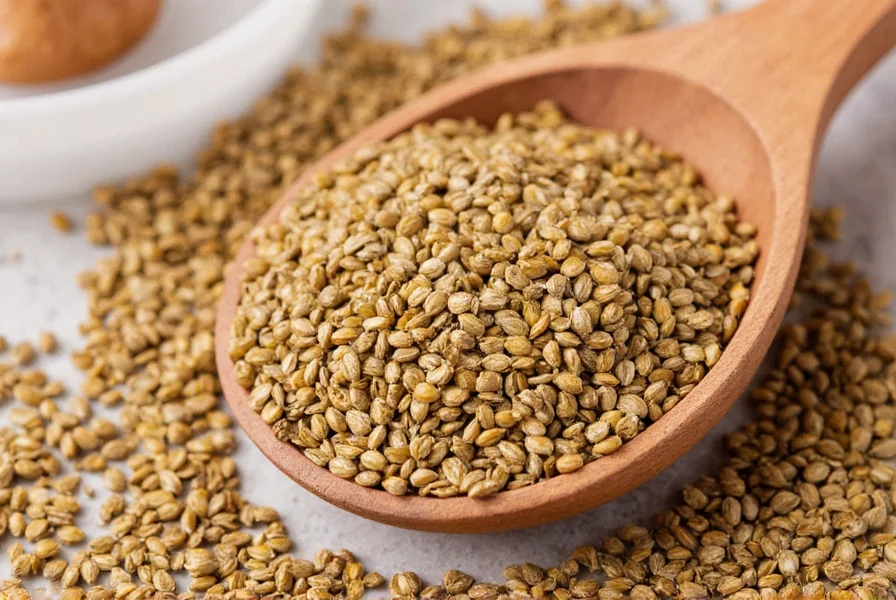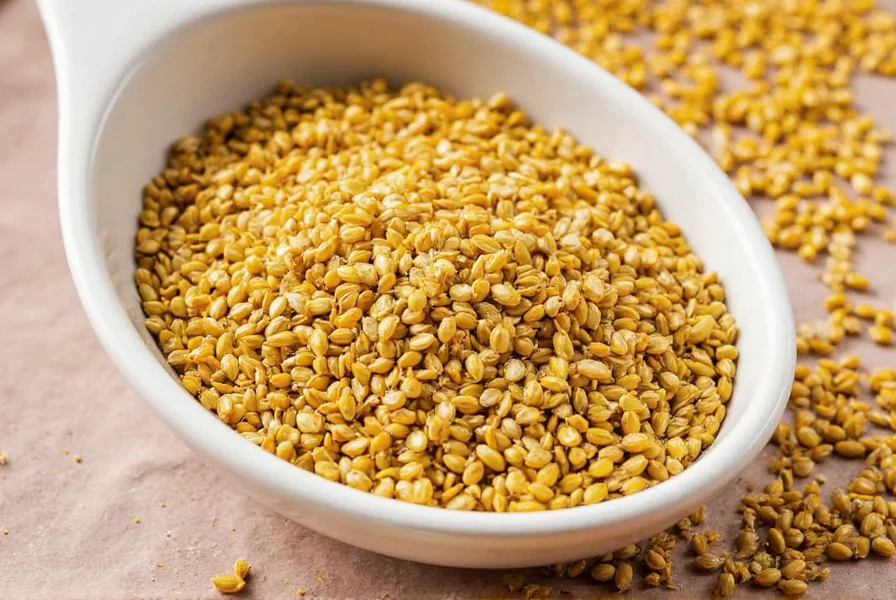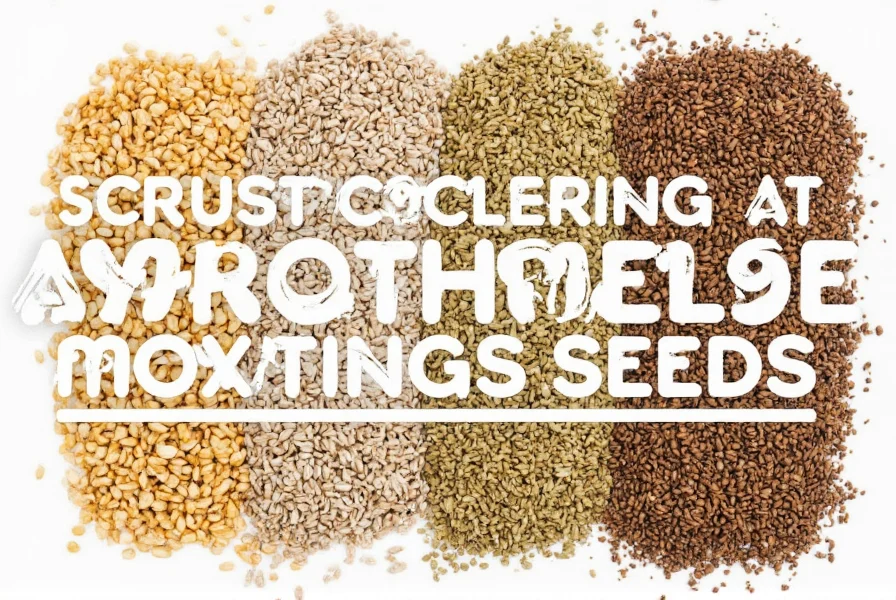When your recipe calls for mustard seeds but your pantry comes up empty, knowing effective alternatives can save your cooking project. Whether you're dealing with an allergy, unavailable ingredients, or simply want to experiment with flavors, understanding proper mustard seed substitutes ensures your dishes maintain their intended character. This guide explores practical alternatives that work across various culinary applications from pickling to curry making.
Why Substitute Mustard Seeds?
Mustard seeds appear in countless global cuisines, from Indian curries to German sauerkraut. Cooks might seek alternatives for several legitimate reasons:
- Allergies or dietary restrictions affecting mustard consumption
- Regional availability issues with specific mustard seed varieties
- Desire to modify flavor intensity while maintaining culinary function
- Running out of mustard seeds mid-recipe
Understanding Mustard Seed Characteristics
Effective substitution requires understanding what makes mustard seeds unique. These tiny powerhouses contribute three key elements to dishes:
- Flavor profile - Ranging from mild and nutty (yellow) to pungent and spicy (brown/black)
- Texture - Providing distinctive pops of crunch when whole seeds are used
- Chemical properties - Releasing enzymes when crushed that create that signature mustard heat
When selecting a mustard seed replacement, determine which characteristic matters most for your specific application.
Best Alternatives for Yellow Mustard Seeds
Yellow mustard seeds offer mild flavor and bright color. These substitutes work well when replacing them:
| Substitute | Ratio | Best For | Flavor Notes |
|---|---|---|---|
| Ground mustard | 1 tsp = 1 tbsp seeds | Dressings, marinades | Milder, more uniform flavor |
| White wine vinegar + turmeric | 1 tbsp vinegar + 1/4 tsp turmeric = 1 tbsp seeds | Pickling, salad dressings | Provides tang and color without seed texture |
| Fennel seeds | 1:1 replacement | Salad dressings, fish dishes | Slightly sweeter, licorice notes |
Substitutes for Brown and Black Mustard Seeds
Brown and black mustard seeds deliver more heat and complexity. When replacing these varieties:
- Wasabi powder - Use 1/4 teaspoon wasabi powder per tablespoon of brown mustard seeds. Mix with water to form a paste. Ideal for sushi dishes or when intense heat is desired. Wasabi substitute for mustard seeds works particularly well in Asian-inspired recipes.
- Horseradish - Substitute 1 teaspoon prepared horseradish per tablespoon of seeds. Best in meat dishes and robust sauces. The horseradish alternative to mustard seeds provides similar sinus-clearing heat but with different flavor notes.
- Radish seeds - Use 1:1 replacement. These offer similar pungency with earthier notes. An excellent mustard seed replacement for pickling when you want comparable texture and heat.

Recipe-Specific Substitution Guide
The best mustard seed alternative varies by application. Consider these specific recommendations:
For Indian Curries and Tempering
When replacing mustard seeds in curry recipes, particularly in South Indian tadka (tempering), consider:
- Cumin seeds - Provides similar popping texture with earthier flavor
- Mustard oil - Use 1 teaspoon oil per tablespoon seeds for authentic flavor (not for consumption raw)
- Fenugreek seeds - Use sparingly (1/2 tsp per tbsp seeds) for complex bitterness
For Pickling and Preserves
Mustard seed substitute for pickling requires maintaining both flavor and preservative qualities:
- Mustard powder + vinegar - 1 tsp powder + 1 tbsp vinegar per tbsp seeds
- Black peppercorns - Provides similar texture with different flavor profile
- Coriander seeds - Milder alternative that complements vinegar brines
For Salad Dressings and Marinades
When whole seeds aren't essential for texture, these liquid alternatives work best:
- Dijon mustard - Substitute 1 tablespoon Dijon per tablespoon seeds
- Whole grain mustard - Best when you want to maintain some seed-like texture
- Lemon zest + black pepper - For citrus-forward dressings needing brightness

Common Substitution Mistakes to Avoid
Even experienced cooks make these errors when replacing mustard seeds:
- Using the wrong ratio - Mustard powder is more concentrated than whole seeds
- Adding substitutes at the wrong cooking stage - Heat-sensitive alternatives lose potency if added too early
- Ignoring flavor compatibility - Wasabi works in Asian dishes but clashes with European preparations
- Expecting identical results - Each substitute brings its own character to the dish
Creating Your Own Custom Mustard Blend
For the most control over your mustard seed replacement, create a custom blend:
- Start with a base of ground mustard (1 part)
- Add complementary spices: turmeric for color, garlic powder for depth, or cayenne for heat
- Include a liquid component: vinegar, wine, or citrus juice
- Adjust consistency with water or oil as needed
This approach works particularly well as a brown mustard seed alternative in complex recipes where a single substitute might not capture all desired elements.
Frequently Asked Questions
Can I use mustard powder instead of mustard seeds in pickling?
Yes, you can substitute mustard powder for mustard seeds in pickling. Use 1 teaspoon of mustard powder for every tablespoon of whole seeds. For best results, mix the powder with vinegar before adding to your brine to prevent clumping. This mustard seed substitute for pickling maintains the tangy flavor while distributing more evenly throughout the liquid.
What's the best substitute for black mustard seeds in Indian cooking?
For Indian recipes requiring black mustard seeds, the closest substitute is brown mustard seeds used in a 1:1 ratio. If unavailable, a combination of cumin seeds (for texture) and a pinch of asafoetida (hing) provides similar flavor complexity. In South Indian tempering, mustard oil can serve as an effective black mustard seed replacement when used sparingly for its distinctive pungency.
How do I replace mustard seeds in a salad dressing recipe?
For salad dressings, the best yellow mustard seed replacement is Dijon mustard at a ratio of 1 tablespoon Dijon per tablespoon of seeds. If you prefer a more textured dressing, use whole grain mustard instead. For oil-based dressings without mustard flavor, combine 1 teaspoon white wine vinegar with 1/4 teaspoon turmeric per tablespoon of seeds to maintain both acidity and color.
Can horseradish effectively replace mustard seeds?
Horseradish makes an excellent substitute for brown or black mustard seeds when you need heat rather than seed texture. Use 1 teaspoon of prepared horseradish per tablespoon of seeds. This alternative works particularly well in meat dishes, robust sauces, and Bloody Mary cocktails. Note that horseradish has a different flavor profile—more sinus-clearing and less nutty than mustard seeds.
What's a good non-allergenic alternative to mustard seeds?
For those with mustard allergies, radish seeds provide the closest texture and mild heat without allergenic concerns. Use a 1:1 replacement ratio. Alternatively, a blend of turmeric (for color) and white wine vinegar (for tang) offers similar visual and flavor elements without any mustard family ingredients. Always verify with an allergist before substituting for allergy reasons.











 浙公网安备
33010002000092号
浙公网安备
33010002000092号 浙B2-20120091-4
浙B2-20120091-4